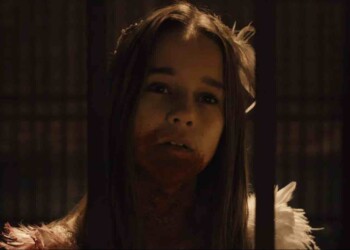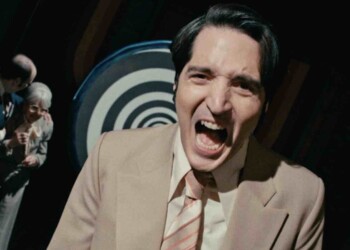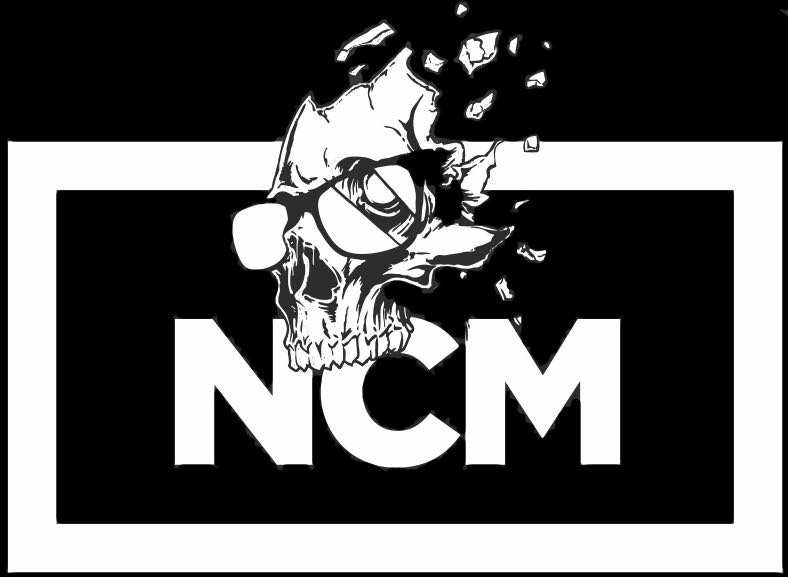One of the most common problems you find in the first issue of a new comic book series is the creators trying to push too much at you too fast. The unchained narrative choices found in comic books combined with their serialized length often requires a lot of set up. First issues are notorious for engorging themselves with preface. They often blast the reader with expositions explaining the history of the world they are building or they have the main character narrate their back story and motivations while also doing the same for each supporting character as they enter the plot.
It’s a tired and broken way to start a story and it seems to be done to get the fat out of the way and get to “the good parts.”
Great writers understand that the set up should be included in “the good parts.” They understand that establishing a world needs to be done over multiple issues and that an introduction should be an unending process.
Red One #1 gets this. It might be the best example of how write a first issue I have ever seen. It defines what the series is going to be about without feeling as if it needs to explain everything. It bestows the reader with an engaging present, which mitigates the need for too much context thus allowing a pleasant sense of momentum.
Part of the reason they were able to get away with this is they made the issue forty pages long. It was a smart move. It allowed the creators to tell a more paced story. Characters and ideas are allowed coalesce naturally and the extra space keeps the plot from feeling abbreviated or crowded.
Red One #1 takes place in 1977 right during the meat of the Cold War. It centers on a Russian super spy named Vera that has been in training with the Russian Special forces from a young age.
Vera is a likable character and one of the book’s best assets. She is a strong, empowered female , who is capable of astonishing physical feats. Her look, stature and posture are reminiscent of Linda Carter’s Wonder Woman (an influence the creative team admits to in the books afterword.)
What separates Vera from other strong female comic book characters is she avoids stepping into the cliché hardened badass bear trap. She is strong physically and in regards to will without ever being dour or brooding. She has a playful, glib attitude that flirts with being silly at times but is never disingenuous. She has an almost stunted, adolescent quality to how she acts, which fits with someone who never got to mature socially because they were in Soviet Military training.
Where the characterization of Vera fails is in the way the creative team takes every opportunity presented to them to exploit Vera’s sexuality. Vera uses her body to reduce male characters to cartoon-hearts-for-eyes levels of pliability, bangs strangers on an airplane, and teases men with constant sexual innuendoes and pin up poses.
The seventies spy genre that this book is trying to reference is characterized by a playful attitude towards sex and it’s possible that Red One just gets lost in brambles of that particular troupe. However, this needless and distracting quality makes Vera feel like less grounded and likable without making her anymore complex. It bubblegums up a strong, positive female character in a genre that is often criticized for lacking those.
Red One’s elevator pitch comes into focus about halfway into the book. America is in the mists of a puritan social movement. A female pastor named Jacky Core, gains a political following by railing against pornography, smut and other vague morally questionable abstractions. When a masked vigilante called the Carpenter begins to kill the targets of Core’s political rantings, her popularity and that of the Carpenter sky rockets. Her support grows to such a level that it looks like she might even be able to run for president.
The USSR fears that if she becomes president she will escalate the Cold War so they send Vera to America with the mission of becoming a super hero that is even more popular than The Carpenter and there by leach support away from Core and her movement.
While I don’t want to be hyperbolic, this is a brilliant premise. The concept of America idealizing a super hero that is secretly a Red Spy during an era where fear of that idea was at its highest is rife with irony and opportunities for commentary.
Political figures manipulating the public through the creating and staging of heroes is neither a new concept nor one found exclusively in fiction. It’s one of those great ideas that is perfect to posit in a first issue. It’s smart, deep and teases a permutation of possible routes the story could take.
You could use this Red One as a clinic on how to write the pilot issue of a comic book. It uses a simple plot to deliver complex ideas. I offers you a longer story than its price might suggest but it does that with purpose. It gives you a deal on issue one in order to sell you issue two. It’s how the game is supposed to work but it is rare that it’s execution is so deft. Its smart creative choices bode well for the series’ future. Assuming the book isn’t minimized by its own libido, it could achieve some very big things.






